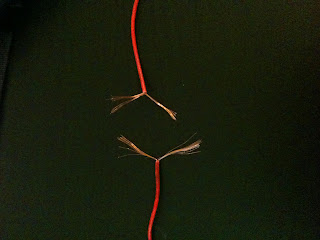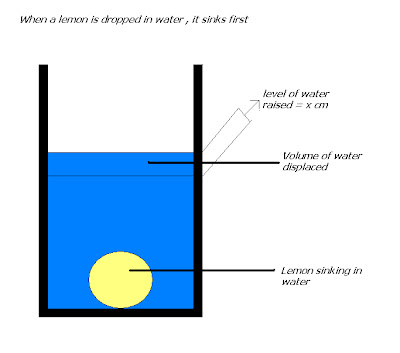Note : There are many sites on the Internet about the Lemon battery. None of it worked for me. I cracked the simple logic. The below experiment works with 100% success rate. Else comment......I will work on the Experiment again
The lemon battery is a simple type of electrical battery that is commonly made for school science projects because it illustrates a battery's main components. Typically, a piece of zinc metal and a piece of copper metal are inserted into a lemon. Everyday objects such as galvanized nails and copper pennies can be used for the zinc and for the copper. A single lemon is usually studied using an electrical meter. Several lemons can be wired together to form a more powerful battery that will power a light-emitting diode, a buzzer, or a digital clock.
The lemon battery is similar to the first electrical battery invented in 1800 by Alessandro Volta, who used brine (salt water) instead of lemon juice. The lemon battery is described in some textbooks in order to illustrate the type of chemical reaction (oxidation-reduction) that occurs in batteries. The zinc and copper are called the electrodes, and the juice inside the lemon is called the electrolyte. There are many variations of the lemon cell that use different fruits (or liquids) as electrolytes and metals other than zinc and copper as electrodes.
Experiment :
Materials required :
1 . Two to three lemons
2. Zinc ( I took it from battery, the silver metal). Open up a battery and u will find a silver colour . Remove the black powder ( carbon) and the carbon rod. You will get the zinc metal
............................................................................................................................................
3.Pure Copper ( copper wire can be got in shops , Its cheap )
 |

First one is a copper vessel which I used it for comfort . The second is the copper wire
4. Connecting wires
5. Alligator Clips for Convienence
6. LED ( Light Emiting Diode ) Bulb :
7. Switch ( Optional - I never use a switch in my experiment )
Attach it anywhere in the circuit. The negative of the circuit should connect the positive of this switch. The negative of the switch should connect the positive of the circuit.
Connection :
But this wont work....... How many ever times you try it......
So I connected a 1.5 V battery to it. The bulb started glowing....
And yes... You may say that lemon is a conductor of electricity . So the bulb glows . But look at this and try....
That means that the remaining 0.5 V were produced by the Lemons.
Target : Do not use a Battery.
So to make things simple , I take the lemon juice in a Copper Vessel. You can use the same zinc rod and copper rod, but I want to produce 1.5 V more. Practically it not possible to use 10 to 15 lemons in my experiment.
So I add Harpic (the same cleaner used at home ( Chloric Acid ) ) along with the citric acid.
Reaction :
When the cell is providing an electrical current through an external circuit, the metallic zinc at the surface of the zinc electrode is dissolving into the solution. Zinc atoms dissolve into the liquid electrolyte as electrically charged ions (Zn2+), leaving 2 negatively charged electrons (e-) behind in the metal:
Zn → Zn2+ + 2e- .
This reaction is called oxidation. While zinc is entering the electrolyte, two positively charged hydrogen ions (H+) from the electrolyte combine with two electrons at the copper electrode's surface and form an uncharged hydrogen molecule (H2):
2H++ 2e- → H2 .
This reaction is called reduction. The electrons used from the copper to form the molecules of hydrogen are made up by an external wire or circuit that connects it to the zinc. The hydrogen molecules formed on the surface of the copper by the reduction reaction ultimately bubble away as hydrogen gas.
This model of the chemical reactions makes several predictions that were examined in experiments published by Jerry Goodisman in 2001. Goodisman notes that numerous recent authors propose chemical reactions for the lemon battery that involve dissolution of the copper electrode into the electrolyte. Goodisman excludes this reaction as being inconsistent with the experiments, and notes that the correct chemistry, which involves the evolution of hydrogen at the copper electrode, has been known for many years.[8] Most of the detailed predictions of the model apply to the battery's voltage that is measured directly by a meter; nothing else is connected to the battery. When the electrolyte was modified by adding zinc sulfate (ZnSO4), the voltage from the cell was reduced as predicted using the Nernst equation for the model. The Nerst equation essentially says how much the voltage drops as more zinc sulfate is added. The addition of copper sulfate (CuSO4) did not affect the voltage. This result is consistent with the fact that copper atoms from the electrode are not involved in the chemical reaction model for the cell.
When the battery is hooked up to an external circuit and a significant electrical current is flowing, the zinc electrode loses mass, as predicted by the zinc oxidation reaction above. Similarly, hydrogen gas evolves as bubbles from the copper electrode. Finally, the voltage from the cell depended upon the acidity of the electrolyte, as measured by its pH; decreasing acidity (and increasing pH) causes the voltage to fall. This effect is also predicted by the Nernst equation; the particular acid that was used (citric, hydrochloric, sulfuric, etc.) doesn't affect the voltage except through the pH value.
The Nernst equation prediction failed for strongly acid electrolytes (pH < 3.4), when the zinc electrode dissolves into the electrolyte even when the battery is not providing any current to a circuit. The two oxidation-reduction reactions listed above only occur when electrical charge can be transported through the external circuit. The additional, open-circuit reaction can be observed by the formation of bubbles at the zinc electrode under open-circuit. This effect ultimately limited the voltage of the cells to 1.0 V near room temperature at the highest levels of acidity.
I will try to make a video for better understanding.
Conclusion:
Electrical current is the flow of electrons (movement) of an electrical charge and is measured using an ammeter. Solid conductive metals contain large population of free electrons, which are bound to the metal lattice and move around randomly due to thermal energy. When two terminals of a voltage source (battery) are connected via a metal wire, the free electrons of the conductor drift toward the positive terminal, making them the electrical current carrier within the conductor.
Note : If This does not work or you think I am wrong pls don't mind to comment























